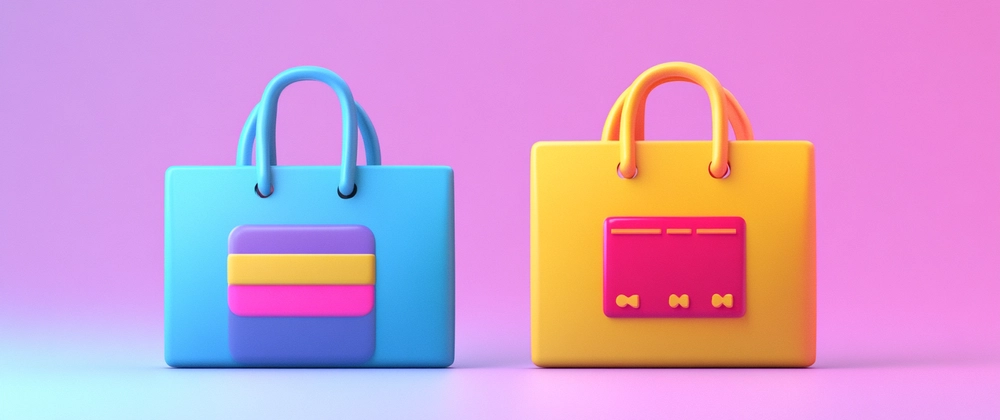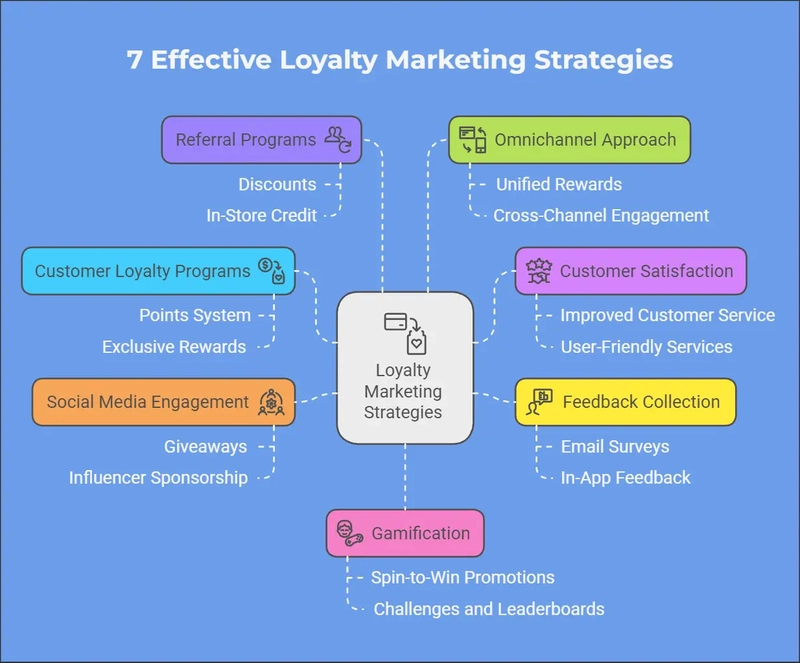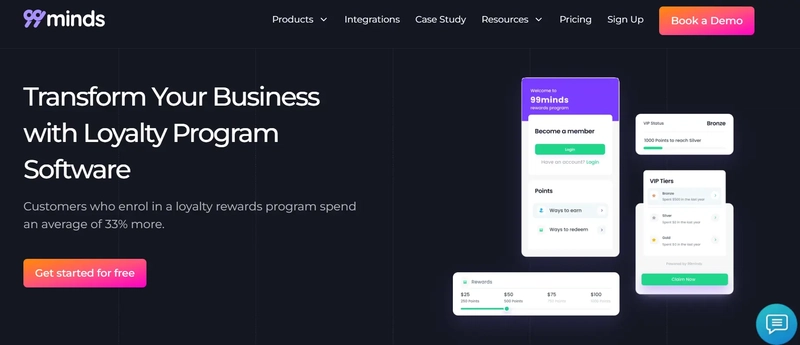Building long-term relationships with customers is crucial for business success. Instead of relying on one-time promotions, brands are now focusing on engaging customers throughout their journey, emphasizing retention and meaningful interactions.
Loyalty marketing plays a key role in this approach. According to Capital One Shopping Research, 70% of U.S. consumers remain loyal to brands offering loyalty programs or rewards. Moreover, According to a Nielsen Survey, 84% of consumers are likelier to stick with a brand that provides a loyalty program. By offering personalized incentives and thoughtful communication, businesses can enhance customer satisfaction, reduce churn, and transform shoppers into enthusiastic brand advocates.
What is Loyalty Marketing?
Loyalty marketing focuses on retaining and nurturing existing customers through targeted incentives and personalized experiences. The goal is to reduce churn and encourage repeat purchases from high-value but often overlooked customers.
Loyalty program marketing goes beyond traditional rewards, such as frequent flier miles, by optimizing the customer journey for every segment. By adopting a customer-centric loyalty marketing strategy, brands can enhance satisfaction, increase customer lifetime value (LTV), and drive consistent repeat customers.
Why is Loyalty Marketing Important?
Loyalty marketing goes beyond offering discounts. It is an essential marketing approach for businesses to establish credibility with their customers, ultimately leading to long term relationships and building trust. Here’s why it is important:
1. Increase Customer Retention
According to Forbes, studies show that acquiring a new customer is five times more expensive than retaining an existing one. A well structured loyalty marketing strategy increases repeat visits and keeps customers engaged with your brand. When customers feel appreciated, they are more inclined to repeat business, resulting in building trust and improved customer retention.
2. Boost Revenue
Repeat customers often spend more on their orders. According to business.com, they spend 67% more than first time shoppers because they trust its brand and if they are comfortable on buying things worth big bucks. Businesses can increase their average order value and achieve consistent revenue growth by building customer loyalty.
3. Improve Customer Experience
Loyalty programs provide customers with a feeling of exclusivity and appreciation. Personalized incentives for each customer will drive engagement, as they help businesses tailor the reward programs to individual preferences, making customers feel important and appreciated. Seamless reward redemption and easy access to loyalty perks add to convenience, driving customer satisfaction and repeat visits.
4. Encourage Brand Advocacy
Satisfied customers become brand ambassadors, spreading positive word-of-mouth recommendations. Loyalty program marketing retains customers and attracts new ones through referrals and social proof. In the age of social media, loyal customers often share their experiences online, helping businesses gain organic visibility and new customers without additional marketing costs.
5. Gather Valuable Data
Loyalty marketing provides information on customer behavior, preferences, and purchase history. This data can assist businesses in optimizing marketing strategies, tailoring proposals, or enhancing product offerings. Such data will enable companies to tailor their loyalty offerings that keep them relevant and impactful through time using customer engagement metrics and loyalty program participation.
6. Reduce Dependency on Discounts
While several businesses rely on sales promotions to attract new customers, loyalty marketing promotes ongoing engagement without the dependence on discounts. This helps build a culture focused on long-term value rather than short-term gains. It also helps reward repeat customers and enables businesses to keep the profit margin while demonstrating appreciation. Thus, it helps make the business model support a more sustainable way of working.
7. Strengthen Emotional Connections
A good loyalty program marketing is not only about the transaction but about building emotional connections with the customers. Brands that reward customer loyalty time and build a sense of belonging, helping customers feel as though they belong to an exclusive community.
8. Increase Customer Lifetime Value (CLV)
A well-structured loyalty marketing strategy encourages repeat purchases, increasing the total revenue a customer generates over their lifetime. When customers stay loyal and continue buying from the same brand, their CLV rises, leading to greater long-term profitability. Businesses that focus on loyalty marketing can maximize customer value while minimizing acquisition costs.
7 Effective Loyalty Marketing Strategies
Retaining customers is crucial for long-term business success, and loyalty marketing strategies can significantly boost repeat purchases. By implementing effective tactics, businesses can ensure that customers remain engaged, satisfied, and more likely to return.
Below, we break down some of the most effective loyalty marketing strategies to keep customers returning for more.
1. Create a Customer Loyalty Program
Customer loyalty programs offer businesses one straightforward way to reward customers for repeat purchases. Through loyalty marketing, customers earn points based on their buying habits that can be redeemed for more products or services. A few programs also allow you to redeem points for cash or offer exclusive member-only products, discounts, or gifts.
Rewards programs also give customers early access to new products and regular updates on special offers. Loyalty marketing platforms like 99minds help businesses build personalized and seamless customer reward programs to increase customer engagement and long-term brand loyalty.
2. Emphasize Customer Satisfaction
A well-structured strategy to improve loyalty program marketing is to increase customer satisfaction. Focusing on customer needs offers long-term loyalty, and there are several strategies to achieve this:
- Improving customer service: Offer multiple contact options with friendly, responsive staff to enhance customer interactions and strengthen trust.
- Offering gifts: Providing gifts like coupons or store credit after a purchase shows appreciation and encourages further engagement.
- User-friendly services: Streamline customer touchpoints such as websites or apps, making the process as easy and smooth as possible and leaving customers wanting to return for more.
This loyalty marketing strategy helps create lasting connections and a positive brand image.
3. Request Feedback Directly to Improve Loyalty
Collecting customer feedback is an effective loyalty marketing strategy that can directly impact customer retention and loyalty. This helps build trust and loyalty in the long run, as it shows customers that their voice matters when they are asked for their input.
Email Surveys: A direct and convenient method to engage customers. Brief but informative surveys sent via email can ask for specific feedback on products or services. Make the survey short to maximize participation and explain how their responses will improve future experiences.
In-App Feedback: For businesses with a mobile app, integrating feedback requests can give them real-time insights. Asking customers to share their experience with your app and services in general, with a small incentive like loyalty points, can help both customers feel valued.
Advertisements: Embedding surveys in your marketing advertisements captures feedback from a larger audience. Ad surveys can also be tailored to specific customers based on their previous purchases or browsing behaviors. Provide incentives, like discounts or special offers for participants, to improve participation.
Social Media: Social Media is an excellent way to connect with your audience and solicit feedback. By applying feedback groups on platforms like Instagram or Facebook, you can immediately ask customers what they think about your products or services. Social media polls are fast, but many users want to help a brand evolve.
4. Post on Social Media and Build a Community
Implementing social media in your loyalty marketing approach is a great way to take your customers and develop long-term relationships in the community with them. Continuously sharing relevant content keeps the customers engaged and aware of products and services, enhancing the brand’s presence.
Giveaways are also an effective tool where participants can win by fulfilling essential criteria like sharing or commenting. This not only increases interaction but also increases loyalty. Sponsoring influencers is also about customer loyalty marketing. When another influencer or I talk about your brand to our audience, we’re helping to introduce your brand to potential new customers and say someone we know trusts them.
Also, responding to customer feedback creates a connection with them and shows that your company cares about its people. Comments on social platforms create credibility and encourage potential customers to trust your brand. In the long run, these efforts go a long way toward building brand loyalty and repeat business.
5. Create a Customer Referral Program
A referral program is a practical component of customer loyalty marketing. It enables businesses to reward customers for referring products to friends and family. It encourages both customer acquisition and retention, building loyalty while expanding your customer base. Referral programs often offer incentives like discounts, in-store credit, or participant gifts.
For example, studies show that customers referred by friends are four times more likely to make a purchase, and referral programs can generate up to 16% higher lifetime value. Integrating a referral program into your loyalty marketing creates a mutually beneficial cycle, driving both customer engagement and brand advocacy.
6. Adopt an Omnichannel Loyalty Approach
Customers interact with brands across multiple touchpoints, including websites, mobile apps, in-store visits, and social media. A seamless omnichannel loyalty strategy ensures customers receive consistent rewards and personalized experiences no matter where they engage with your brand. Key omnichannel tactics include:
- Unified rewards system: Customers earn and redeem points across all platforms.
- Cross-channel engagement: Email, SMS, social media, and in-app notifications work together to keep customers engaged.
- Consistent experience: Ensure loyalty benefits and messaging remain the same across online and offline stores.
7. Utilize Gamification to Enhance Engagement
Gamification adds fun and excitement to customer loyalty marketing by making interactions more engaging and rewarding. Incorporating game-like elements can encourage more engagement, increase brand affinity, and drive repeat purchases by providing a sense of achievement and exclusivity. Examples include:
- Spin-to-win promotions: Customers spin a virtual wheel for discounts or free products.
- Streak rewards: Customers earn bonuses for consecutive purchases.
- Challenges and leaderboards: Reward customers for completing certain actions, such as referring friends or making multiple purchases within a timeframe.
Loyalty Marketing Channels
Loyalty marketing channels refer to the different platforms and touchpoints that businesses use to engage with and retain customers through loyalty programs. Employing several different channels ensures customers experience smooth movement and maximum interaction with the brand. Here are some of the most effective loyalty marketing channels:
1. Email Marketing
Sending personalized promotions, loyalty updates, and exclusive offers straight to customers’ inboxes. Brands can then analyze purchase history, audience preferences, and level of engagement to target campaigns with precision. You can send automated emails as part of a sequence to remind customers about points they haven’t used yet, birthday rewards, and exclusive discounts for VIP customers. Personalized subject lines and dynamic content help increase open rates and conversions.
2. Mobile Apps
Providing real-time updates on loyalty points, promotions, and in-app rewards. Businesses can use push notifications to notify customers of flash sales, double points days, and new loyalty perks. Mobile apps allow effortless integration of digital wallets so users can easily keep their rewards and redeem them. Gamification Elements, such as earning achievement badges and progress tracking, can be implemented to allow users to have fun while engaging with the content.
3. Social Media Platforms
Providing customers with contests, exclusive content, and dynamic loyalty program features. Hashtag challenges, encouraging user-generated content, and putting on live Q&As can help build a community for brands. For example, loyalty program members may be granted early access to product announcements or receive social media-only discount codes, creating an added incentive for interaction and exclusivity.
4. E-commerce Websites
E-commerce websites where customers access loyalty programs to claim rewards. Personalized dashboards can show a customer’s point balance, available rewards, and upcoming promotions. Brands can embed checkout-based incentives, for example, instant discounts for members or exclusive add-ons for high-tier customers, to stimulate repeat purchases.
5. Physical Stores
Using store signage, receipts, and customer service interactions for loyalty perks, QR codes on receipts could guide customers to enroll in the program, and staff could be trained to speak up about rewards and upcoming promotions. Integrating POS systems with a loyalty program means in-store customers can earn and redeem during purchases without interruption.
How to Measure Loyalty Marketing
Tracking key metrics can help assess the success of your loyalty marketing efforts:
1. Customer Retention Rate
This metric shows the percentage of customers who return to make another purchase. A high retention rate indicates strong customer loyalty and satisfaction with your brand.
2. Customer Lifetime Value (CLV)
CLV is the total revenue a customer generates for your brand during their tenure with you. The higher the CLV, the more profit you earn per customer, making it a key metric for evaluating long-term business performance.
3. Net Promoter Score (NPS)
NPS measures customer satisfaction and their likelihood of recommending your brand to others. A high NPS suggests strong brand advocacy and a loyal customer base.
4. Repeat Purchase Rate
This metric shows the percentage of customers who make repeat purchases. An increasing repeat purchase rate indicates stronger customer loyalty and better engagement with your brand.
5. Redemption Rate
The redemption rate measures the percentage of loyalty rewards that customers actually use. A higher rate suggests an effective and engaging loyalty program incentivizing repeat purchases.
Conclusion
Loyalty marketing is an essential strategy that helps businesses foster deeper customer relationships. By offering tailored rewards, referral programs, and personalized experiences, companies can boost customer retention, increase sales, and create long-term brand advocates.
Customer loyalty marketing enhances customer satisfaction and generates higher lifetime value and repeat business. With tools like 99minds, businesses can quickly implement and manage loyalty programs, ensuring a seamless and impactful approach to retaining loyal customers and driving growth.







Top comments (0)